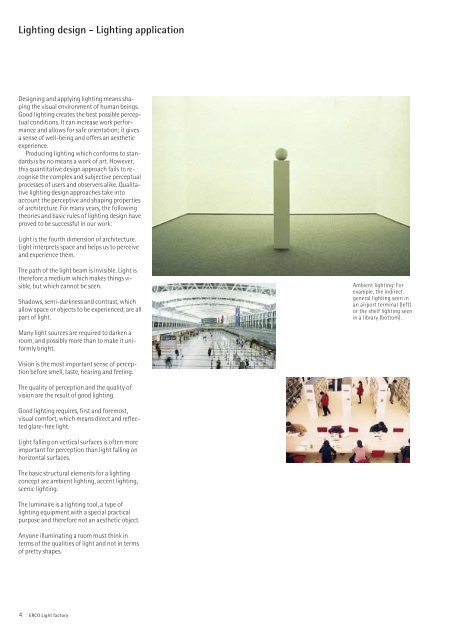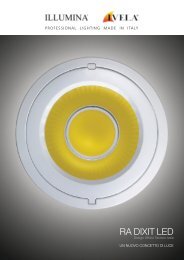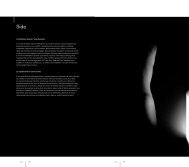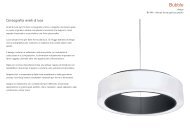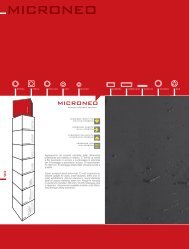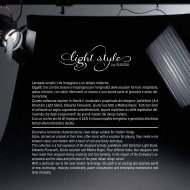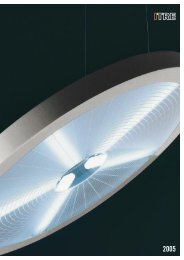E Light factory
E Light factory
E Light factory
Create successful ePaper yourself
Turn your PDF publications into a flip-book with our unique Google optimized e-Paper software.
<strong>Light</strong>ing design - <strong>Light</strong>ing application<br />
Designing and applying lighting means shaping<br />
the visual environment of human beings.<br />
Good lighting creates the best possible perceptual<br />
conditions. It can increase work performance<br />
and allows for safe orientation; it gives<br />
a sense of well-being and offers an aesthetic<br />
experience.<br />
Producing lighting which conforms to standards<br />
is by no means a work of art. However,<br />
this quantitative design approach fails to recognise<br />
the complex and subjective perceptual<br />
processes of users and observers alike. Qualitative<br />
lighting design approaches take into<br />
account the perceptive and shaping properties<br />
of architecture. For many years, the following<br />
theories and basic rules of lighting design have<br />
proved to be successful in our work:<br />
<strong>Light</strong> is the fourth dimension of architecture.<br />
<strong>Light</strong> interprets space and helps us to perceive<br />
and experience them.<br />
The path of the light beam is invisible. <strong>Light</strong> is<br />
therefore a medium which makes things visible,<br />
but which cannot be seen.<br />
Shadows, semi-darkness and contrast, which<br />
allow space or objects to be experienced, are all<br />
part of light.<br />
Many light sources are required to darken a<br />
room, and possibly more than to make it uniformly<br />
bright.<br />
Vision is the most important sense of perception<br />
before smell, taste, hearing and feeling.<br />
The quality of perception and the quality of<br />
vision are the result of good lighting.<br />
Good lighting requires, first and foremost,<br />
visual comfort, which means direct and reflected<br />
glare-free light.<br />
<strong>Light</strong> falling on vertical surfaces is often more<br />
important for perception than light falling on<br />
horizontal surfaces.<br />
The basic structural elements for a lighting<br />
concept are ambient lighting, accent lighting,<br />
scenic lighting.<br />
The luminaire is a lighting tool, a type of<br />
lighting equipment with a special practical<br />
purpose and therefore not an aesthetic object.<br />
Anyone illuminating a room must think in<br />
terms of the qualities of light and not in terms<br />
of pretty shapes.<br />
4 ERCO <strong>Light</strong> <strong>factory</strong><br />
Ambient lighting: For<br />
example, the indirect<br />
general lighting seen in<br />
an airport terminal (left)<br />
or the shelf lighting seen<br />
in a library (bottom).


